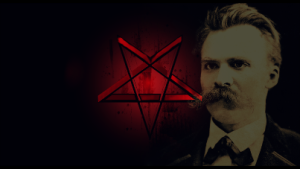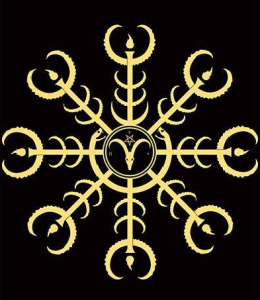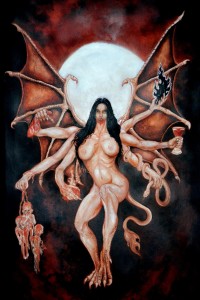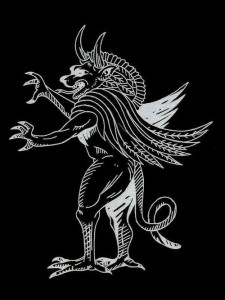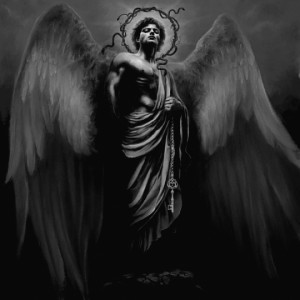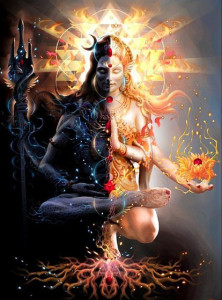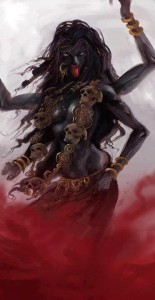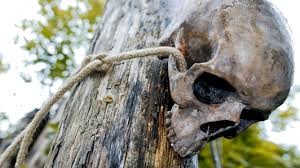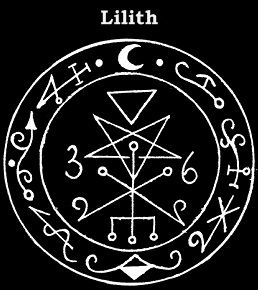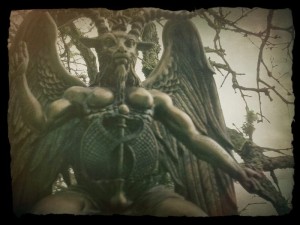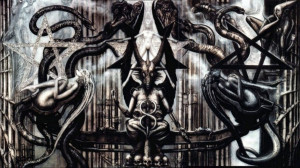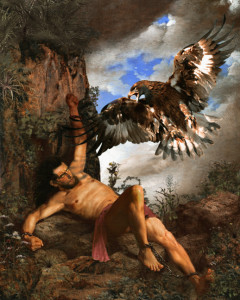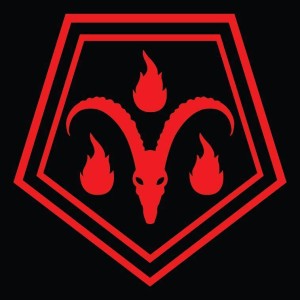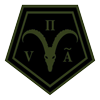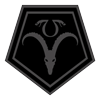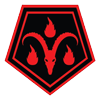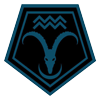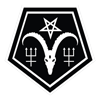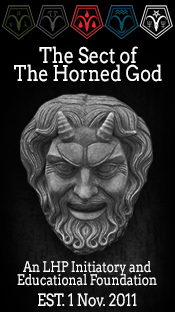The Will to Power and the Left-Hand Path
by Thomas LeRoy
“This world is the Will to Power—and nothing else! And you yourselves too are this Will to Power—and nothing else!” — Friedrich Nietzsche
No one is born on the left-hand path. None of you, you good Satanists, nor your lovely offspring. Not even the children of Anton LaVey. No one has self-determination (the essence of the left-hand path) as a small child. All are subject to “other-determination”, thus all are born on the right-hand path. It is on the RHP that one learns one’s cultural collective ways to deal with others and society in general. But even if you self-identify as a Satanist, you still must choose to take the left-hand path. And what is the fundamental reason for this choice?
Personal empowerment.
You choose to step on the LHP because you have a drive to further your power — to become more than you are. You are not one who is simply searching for spiritual enlightenment; it is much more than that. If it were only about reaching calm in your soul you’d join a church, or a Wiccan coven, or sit around with some hippies in the lotus position chanting some gibberish you think is Sanskrit, but has more in common with Pig-Latin. No, it’s more. You have a drive, a will, that compels you to do that which most fear. This “will” pushes you to gaze down into the abyss and not divert your eyes. You are not one who shrinks from the horrors of reality, nor do you struggle blindly, but live deliberately with a fervor for existence. Friedrich Nietzsche called this sense of joy and vitality accompanying the imposition of values on a otherwise meaningless world “tragic optimism”. It belies the “reality” that your world is not Will to Existence, but Will to Power.
The will to power is a natural force, one that propels all life. It is not the need to conquer one’s neighbors in a bloody raid, but to conquer one’s fears, phobias or short-comings. It is about the experience of joy felt when one “over-comes”. And the left-hand path is the individual’s path to “self-overcoming”. It is a truly life-affirming philosophy that brings forth a healthier you through individual development based upon personal needs and efforts.
On a deeper level, the will to power, though, explains the fundamental changing aspects of reality. Everything is in flux. Matter is always moving and changing, as are ideas, knowledge, and even truth. The will to power is the fundamental engine of this change. And on the left-hand path, one does not fear change, for it is change the individual seeks.
Change in one’s self
The Hyperborean: Going Beyond Christian Morality
From the beginning, Christianity and many other right-hand path philosophies have portrayed life as punishment and as a transitory state of being. The body is looked upon as a prison and is a danger to the soul; as such the individual has to live life according to specific rules of conduct to attain the recompense of the “Afterlife“. The here and now is all but ignored, reality little more than an introduction to a greater story to come.
The Hyperborean, the highest degree in the Sect (a name used by Nietzsche to describe those that live his philosophy), denies this notion as that of the weak in mind and spirit. It is the mentality of the slave. These slaves lack will and creativity and blindly follow authority, basing their lives on the notion of that perfect world to come. They are crippled by their own beliefs and do little to advance as people or a species since they value meekness and restraint. They are filled with the constant fear of going astray from what they see as the path of religious truth. Trapped in a moral system that will not allow them to truly exert their will, they internalize their rage. Guilt sets in, leading to self-contempt and depression.
What is most insidious is this “morality of the slave” has not only permeated the hearts and minds of the religious, but also those who claim no religious faith. Many take it as axiomatic that meekness, civility, communal cooperation are universal truths, and that the strong individualist, the Hyperborean, having created their own morality, is a selfish being. Since they dare to break the chains of an ancient moral code, they become social pariahs. But the status of outcast is a mark of honor to the Hyperborean, for a wild boar finds no joy in a pig-pen.
The Hyperborean is a person of action and a philosophical warrior. They dare to take chances, doing what most people only dream of. The Hyperborean is their own God, giving themselves morality and value as they see fit according to their will. They strive for personal structures to moral standards, thus calling for new ways of evaluating the world. These strong individualists have re-thought morality in their day to day lives, but by doing so they question what it means to be human, since humanity has always been based on a concept of morality which regulates social practices and norms. The Hyperboreans, though, test themselves and their vision against such regulations.
They unabashedly test their strengths against the world.
Mythological Guides on the Left-Hand Path
Within the Sect, the use of mythological archetypes may vary from person to person. Most Satanic groups use Satan, and only Satan. We also utilize Pan, Cernunnos, Prometheus, Dionysus, the choice is yours; hence the name “The Sect of the Horned God” and not “The Sect of Satan”. These gods are guides to lead the individual through the deeper aspects of the Self, through the subconscious, past your demons and to the door of the collective unconscious, where aspects of these archetypes are recognized.
The collective unconscious consists of primordial images, the most ancient and universal “thought forms” of humanity. Carl Jung pieced together the theory of the collective unconscious when he noticed that some of his less educated patients created delusional images that he found to be analogous to symbolic representations from many religions and mythologies. The link between the dreams, fantasies and drawings of these patients and the symbolic structure of mythologies prompted Jung to speculate about a collective, or shared, origin of symbolic images. The horns and antlers of the Greco/Celtic gods, and the fire of Prometheus would be examples of recognizable universal symbols. The horns representing power, the fire knowledge. Together they become what a true Satanist is: a synthesis of strength through personal knowledge and knowledge through personal strength.
Time has brought us a myriad of gods from every culture. Most of these metaphorical representations tend to be guides upon the “right-hand path”. But some have a darker aspect. These archetypes lead you in a different direction, delving into that deeper sphere of the subconscious.
Here are but a few:
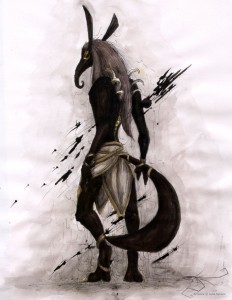
Set is a god of the desert, storms, disorder, violence and foreigners in ancient Egyptian religions. In Egyptian mythology, Set is portrayed as the usurper who killed and mutilated his own brother Osiris. Set was never a completely evil figure though. He protected the sun barge of Re, his benefactor, during its nightly journey through the Underworld.
Ahriman is the evil spirit in the dualistic doctrine of Zoroastrianism. His essential nature is expressed in his principal epithet—Druj, “the Lie.” The Lie expresses itself as greed, wrath, and envy. To aid him in attacking the light, the good creation of Ahura Mazdā, the Wise Lord, Ahriman created a horde of demons embodying envy and similar qualities.
Lucifer is another name for “the morning star, the planet Venus”. He is also known as the “Light-Bringer”, “Bringer of Dawn”. According to Ezekiel 28:13, a probable reference to Lucifer, we learn that he is an amazing being to behold: “You were the seal of perfection, full of wisdom and perfect in beauty. You were in Eden, the garden of God; every precious stone was your covering: the sardius, topaz, and diamond, beryl, onyx, and jasper, sapphire, turquoise, and emerald with gold. The workmanship of your timbrels and pipes was prepared for you on the day you were created.”
Shiva is the destroyer of the world, after which Brahma again creates the world anew and so on. Shiva is responsible for change both in the form of death and destruction and in the positive sense of destroying the false identification of the Self.
Kali is the fearful and ferocious aspect of the mother goddess. She assumed the form of a powerful goddess and became popular with the composition of the Devi Mahatmya, a text of the 5th – 6th century AD. Here She is depicted as having been born from the brow of Goddess Durga during one of her battles with the evil forces. As the legend goes, in the battle, Kali got so carried away in the killing spree she began destroying everything in sight.
These gods of the left-hand path should not be ignored. If they come knocking on the door of your psyche welcome them in, for it is important to recognize the archetype that best represents you. Most will go with Satan, but some may find comfort in Nature and all things Celtic and thus are drawn to Cernunnos. Others to the carnality of Pan, or the revelry of Dionysus. And still others to the enlightenment of Prometheus; or the female aspects of Lilith, or Kali.
What’s important is that they should be a mirror of the Self.
“Gods suppressed become devils, and often it is these devils whom we first encounter when we turn inward.” –Joseph Campbell
Who Runs the Asylum? by Thomas LeRoy
Who runs the asylum?
Bent upon the edge,
Who scatters the dreams?
Left upon the ledge.
Who tastes the evil?
Ripe upon the tongue,
Who warns the weary,
Upon the broken rung.
Who sings the song?
As madness tempts the fools,
A step into the dark,
As phantoms break the rules.
Who’s voice is stifled?
As they scream in fear,
Who bleeds the most?
As you remove the spear.
Who scars the night?
A streak across the sky,
Who laughs the loudest,
On that day you die?
The Charge of the Horned God
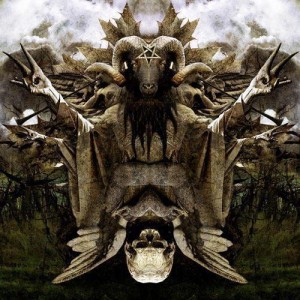
“Listen to the words of the Horned God,
Guardian of all things untamed, Lord of Shadows, Master of Darkness,
And keeper of the Gates of Death whose call all must answer:
“I am the fire within your heart, the yearning of your soul.
I am the Hunter of Knowledge,
The Seeker of Truth,
I stand in the darkness of light, who you have named Death,
I throw open wide the Gates of Hell,
And unleash my minions!
But first I beckon ye forth,
To come unto me,
And learn the secrets of Death and Peace,
For I am the Infernal Lord, the Devourer of the Weak!
Scourge and Flame, blade and blood,
These are my gifts unto thee.
I, Keeper of the Black Flame,
Whom you seek in the darkness bright,
I, who has been called Pan, Cernunnos, Dionysus, Shiva and Satan,
For behold!
You are my children and I your father.
For whomever seeks me know I am the master of the Pit,
The fury of the storm in your soul!
On swift night wings go forth,
Seek me with pride and selfishness,
Reason and logic,
But best to seek me with lust and strength,
For this is my path!
Hail the Horned God!
Hail Thyself!
Hail the Sect!”
Druids: The Dark Holy Men of the Celts
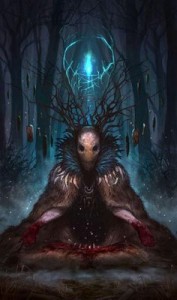
by Thomas LeRoy ~ Founder of The Sect of the Horned God
Most of what we know of the ancient Druids was written by the Greeks and Romans, enemies of the Celts. And what they have written of these “Men of the Oak” has not been flattering. Today’s Druids play at being the jovial nature lovers, marching around Stonehenge on the Solstices performing rituals created in the early 19th century. But were the Druids really happy tree-huggers, or did they have a darker side?
The Druids were the Celtic priests, philosophers, judges and soothsayers who convened with the gods, and divined the future. They were political advisers who had influence over the decisions of kings and chiefs. The Druids were extremely powerful in Celtic society, a society known for its beautiful art, mythology, warrior culture and head-hunting.
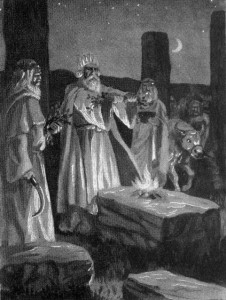
Roman texts accuse the Druids of performing human sacrifice. According to Caesar, the Druids believed that “The Gods delight in the slaughter of prisoners and criminals, and when the supply of captives runs short, they sacrifice even the innocent”. Tacitus claims the Druids “…deemed it a pious duty to cover their altars with the blood of captives and to consult their deities through human entrails.” Diodorus Siculus claims that the Druids, “… choose a person for death and stab him or her in the chest above the diaphragm. By the convulsion of the victim’s limbs and the spurting of blood, they foretell the future.”
We may be shocked at Celtic sacrifice and head-hunting, as were the Greeks and Romans, and wonder if such reports could have been exaggerated, seeking to portray the Celts as barbarians, thus giving Rome justification to conquer. But, in truth, the classical reports don’t even begin to compare with the gruesome evidence archaeologists have unearthed.
At Roquepertuse in southern France, a Celtic sanctuary from the third century B.C., yielded concrete evidence of severed heads used in rituals. A substantial Iron Age walled fort was in place there with a cultic shrine, dominated by decorative porticos with niches. Real and sculpted human heads were exhibited in these niches: the portico apparently constituted something of a gallery of heroes.
In Britain in the 1980’s, the bog-mummified body of a Druidic sacrifice “Lindow Man” came to light. Evidence showed that he was a person of high rank, perhaps even a Druid himself, killed about the time of the Roman invasions. Did the Druids do this to appease the gods so that they may aid them against the Romans?
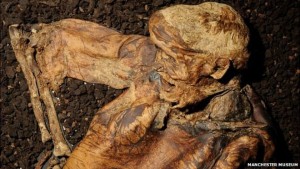
Then came the discovery in 2000 of 150 human skeletons, found in a cave in Alveston, England. Evidence showed that the Druids may have killed their victims in a single event. It’s possible that the Roman invasion itself was responsible for the escalation in the Druids’ ritualized slaughter, according to the researchers.
Now, is it fair to judge the Druids through the filter of the 21st century? No.
The Celts were a people of their time. A brutal age. But still, the modern Druids should not ignore the fact that true Druidism is soaked in blood.
Lilith: The Symbolic Embodiment of the Left-Hand Path Woman
by Thomas LeRoy, Founder of The Sect of the Horned God
Lilith’s origins, it is said, stem from the Great Mother Goddess of the settled agricultural folk of the Middle East. These were the tribes that resisted the advancement of the nomadic herdsmen invaders, later called the Israelites. As is customary throughout history, the gods and goddesses of many conquered regions are often twisted into devils and demons. Lilith is no exception. Because of their contempt for the Canaanites and those other agricultural tribes of the region, the ancient Hebrews turned this otherwise docile goddess into the mother of demons, one that drank the blood of Abel, the herdsman, after being slain by the elder “god” of agriculture and smithcraft, Cain.
Hebrew myth tells of Lilith being Adam’s first wife, which also has a relation to the Sumero-Babylonian Goddess Belit-ili, or Belili. Yahweh created Adam and Lilith as twins joined together at the back. Strong willed, Lilith demanded equality with Adam. Adam tried to make Lilith lie beneath him during sexual intercourse, but she would not meet his demands of male dominance. Lilith cursed Adam and left Eden to make a home by the Red Sea. While there Lilith became a lover to demons, producing 100 babies a day. It is said by experts in comparative mythology that Lilith’s Red Sea is but another version of Kali Ma’s Ocean of Blood, which gave birth to all things, but needed periodic sacrificial replenishment.
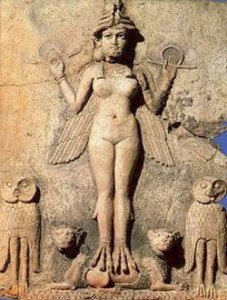
Adam, furious at being abandoned by his wife, complained to Yahweh. In response, Yahweh sent three angels, Sanvi, Sansanvi and Semangelaf, to bring Lilith back to Eden. Lilith rebuffed the angels by cursing them. The angels said to her that Yahweh would take her demon children away unless she returned to Adam. When she did not return, she was punished accordingly. And, to appease Adam’s needs, God sent to him the more complacent Eve.
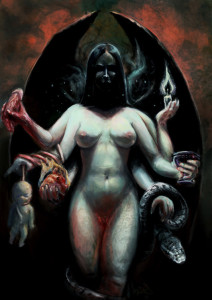
Enraged at Yahweh, Lilith became a female demon of the night who supposedly flew about, searching for newborn children either to kidnap or strangle. While on her night-time ventures she would also seduce men into propagating more demon sons, thus the myth of the succubi was born. From a psychological point of view, this plays into the Jungian idea of the dark anima, or the feminine shadow, represented in the evil seductress. Belief in Lilith’s sinister erotic powers were so great, it led some Jewish communities into adopting the custom of not allowing sons to accompanying their dead father’s body to the cemetery. The reason being was that they could be shamed by the hovering presence of their demon half-siblings, born of their father’s seduction by Lilith.
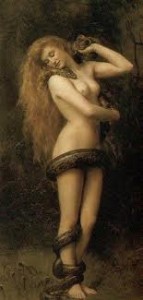
Although Lilith has become a demonized representation of promiscuity and disobedience, she should instead be seen as a positive figure, a symbol of autonomy, sexual equality, and control of a one’s own destiny. Often associated with the Serpent in the Garden of Eden, in this incarnation Lilith symbolically freed humankind from the tyrannical rule of a trickster god. The expulsion from the Garden should not be looked at a curse, but as the beginnings of a destined journey to consciousness. Lilith is the supreme representation of the left-hand path woman, independent, having discarded the patriarchal yoke, and not afraid to use all the tools available to her, including her sexuality, to gain the most out of existence.
“NEVER FORGET THAT YOU ARE A WOMAN, AND THE GREATEST POWERS YOU CAN EMPLOY AS A WITCH ARE TOTALLY DEPENDENT UPON YOUR OWN SELF-REALIZATION THAT IN BEING A WOMAN YOU ARE DIFFERENT FROM A MAN AND THAT VERY DIFFERENCE MUST BE EXPLOITED!”
― Anton Szandor LaVey
Baphomet as a Symbol of Self-Deification
By Thomas LeRoy, Founder of The Sect of the Horned God
Throughout the history of the arcane, Baphomet has held an unprecedented position. As a depiction of the Absolute in symbolic form, it can be found everywhere in the occult world, in both right and left-hand path practices. Sometimes called the “Goat Idol of the Knights Templar”, or the deity of the “Sorcerers’ Sabbat”, it’s been stated that because it is depicted as a paradoxical being, both human and animal, male and female, good and evil, etc., it represents the major harmonious dichotomies of the cosmos.
There are several theories concerning the origins of the name “Baphomet”. The most common explanation claims that it is an Old French corruption of the name of Mohammed (which was Latin-ized to “Mahomet”) – the Prophet of Islam. During the Crusades, the Knights Templar ventured throughout the Middle-East where they became acquainted with Arab mysticism. This contact with Eastern civilizations allowed them to bring back to Europe the basics of what would become Western occultism, including Gnosticism, alchemy, Kabbalah and Hermetism. The Templars’ affinity with the Muslims led the Church to accuse them of the worship of an idol named Baphomet, thus leading to a plausible link between Baphomet and Mahomet.
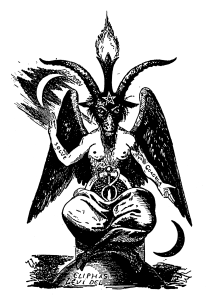
The most famous likeness of Baphomet is found in Eliphas Levi’s “Dogme et Rituel de la Haute Magie“. Levi is the man behind the image of Baphomet as the “Sabbatic Goat of Mendes”. This modern depiction of it appears to take its roots from several ancient sources, but primarily from pagan gods. Baphomet bears resemblances to gods all over the globe, including Egypt, Northern Europe and India. In fact, the mythologies of a great number of ancient civilizations include some kind of horned deity. In Jungian theory, Baphomet is a continuation of the horned-god archetype, as the concept of a deity bearing horns has found to be universally present in individual psyches. The Horned God is one of the oldest fertility gods in human history, taking various incarnations such as Pan, Cernunnos, Dionysus, etc. As stated previously, Baphomet is also a composite creation symbolic of alchemical realization through the union of opposite forces, a Chimera hermaphrodite with bi-sexual features.
Eliphas Levi explains the symbolism of his illustration as follows:
“The goat on the frontispiece carries the sign of the pentagram on the forehead, with one point at the top, a symbol of light, his two hands forming the sign of occultism, the one pointing up to the white moon of Chesed, the other pointing down to the black one of Geburah. This sign expresses the perfect harmony of mercy with justice. His one arm is female, the other male like the ones of the androgyne of Khunrath, the attributes of which we had to unite with those of our goat because he is one and the same symbol. The flame of intelligence shining between his horns is the magic light of the universal balance, the image of the soul elevated above matter, as the flame, whilst being tied to matter, shines above it. The beast’s head expresses the horror of the sinner, whose materially acting, solely responsible part has to bear the punishment exclusively; because the soul is insensitive according to its nature and can only suffer when it materializes. The rod standing instead of genitals symbolizes eternal life, the body covered with scales the water, the semi-circle above it the atmosphere, the feathers following above the volatile. Humanity is represented by the two breasts and the androgyne arms of this sphinx of the occult sciences. (211-212)”
Baphomet has become the ultimate “scapegoat”, the face of witchcraft and black magic; a dark, foreboding figure, one synonymous with that Judeo/Christian miscreant called “Satan”. But, in truth, Baphomet can represent the accomplishment of reaching the “Higher Self”. Because of this it has been adopted by some practitioners of the left-hand path as a symbol of self-deification, or becoming one’s own god. Self-deification, though, does not come about through a simple proclamation. It is a slow process, taking years of study upon the heterodox path, going your own way, breaking away from the prevailing cultural norms. But with a revaluation of all values, and allowing the ego to better understand the subconscious, a supreme knowledge of the self can come about, thus reaching a state of perfect equilibrium. It is then that the occult initiate can point the right hand towards the heavens and the left towards the earth and pronounce that hermetic axiom which has reverberated over the millennia: “As Above, So Below”.
Prometheus

by Thomas LeRoy, Founder of The Sect of the Horned God
“One thing that comes out in myths is that at the bottom of the abyss comes the voice of salvation. The black moment is the moment when the real message of transformation is going to come. At the darkest moment comes the light.”
— Joseph Campbell
What connection does Prometheus have to the left-hand path? In Greek mythology, Prometheus (whose name means “the one with foreknowledge”) had a reputation of being something of a trickster, one with a strong rebellious nature. His role was to stir up the existing order and not to bolster the power of Zeus, but to question it. In his book, “Lords of the Left-Hand Path” by Stephen Flowers, he states, “In the history of the kind of thought we are calling left-hand path in the West, it is difficult to overestimate the importance of the myth of Prometheus.”
To get an idea of the nature of Prometheus, we need to go back to the Greek myths themselves. The Titan Prometheus was one of the ringleaders in the battle between the Titans and the Olympian gods, led by Zeus. The goal was to gain control of the heavens. Prometheus switched sides, though, and supported the victorious Olympians when the Titans would not follow his advice to use trickery in the battle.
Eventually Prometheus was given the task by Zeus to create Man. He shaped Man out of mud, and Athena breathed life into his clay figure. Prometheus had assigned his brother Epimetheus (whose name means “afterthought”) the task of giving the creatures of the earth their various qualities, such as swiftness, cunning, strength, fur, and wings. Unfortunately, by the time he got to Man Epimetheus had given all the good qualities out and there were none left. So Prometheus decided to make Man stand upright as the gods did and, feeling sorry for Man’s weak and naked state, Prometheus raided the workshop of Hephaistos and Athena on Mt. Olympus and stole fire.
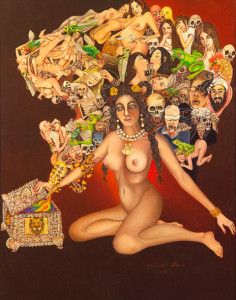
Partially with revenge in mind, Zeus sent Epimetheus a gift of the first woman, Pandora, who like Eve was blamed for causing all the evils humanity has had to suffer. Along with the curious woman, Zeus sent a closed box, telling Epimetheus it was not to be opened. Naturally Epimetheus gave the box to Pandora and, out of curiosity, she opened it. Out flew all the evils and plagues of the world: sorrow, disease, pestilence, war, etc. The only thing that remained in the box was hope.
Zeus, still angry with Prometheus for the theft of fire, sent his servants, Force and Violence, to seize the Titan and take him to the Caucasus Mountains where he would be chained to a rock with unbreakable adamanite chains. Here he was tormented by a giant eagle tearing at his liver. To add to the torment, the liver re-grew every night and the eagle returned each day to perpetually torture Prometheus.
But Zeus gave Prometheus a chance out of this predicament if he met two conditions. The first was that an immortal must volunteer to die for Prometheus, and the second was that a mortal must kill the eagle and unchain him. Eventually, Chiron the Centaur agreed to die for him and Heracles killed the eagle and unbound him.
Because of certain rebellious qualities, Prometheus has similarities to the Christian interpertation of Satan. In the book, “Lucifer and Prometheus” by R.J. Zwi Werblowsky, it is argued that the Satan of John Milton’s Paradise Lost is a strangely appealing character because of the attributes he shares with Prometheus. The book also points out the essential ambiguity of Prometheus and his dual Christ-like/Satanic nature as developed in the Christian tradition. Werblowsky also uses the terminology of Carl Jung in examining “mythological projections of the human psyche”, though he emphasizes that he is not interested in the concept of the archetype in the strict Jungian sense. Rather, he sees the myth of figures such as Satan and Prometheus as expressing “the shortcomings … of the world as conceived by the human soul.”
The myth of Prometheus is not simply a tale explaining how humans received the essential tool called fire, it instead metaphorically relates how we came upon that divine gift, that quality of the gods called intellect. The left-hand path is the individual’s quest to achieve divine power, or self-deification. And needed to journey this path is our own personal light. Without that gift from Prometheus we would be nothing more than beasts, naked on a path of ignorance, searching, crawling blindly toward any distant light.
The Sigil Project
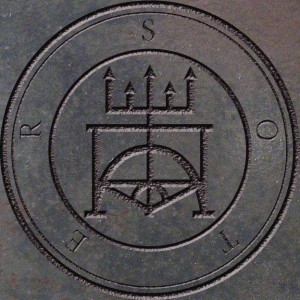
by Thomas LeRoy, Founder of The Sect of the Horned God
Demons, angels, gods and monsters originate from within. They are aspects of our character. According to the psychologist, Carl Gustav Jung, the subconscious and what goes on therein, can not be fully explained in words, for the lower reaches of the psyche does not communicate in words, it speaks to us in symbols and metaphors. So in the dark depths of the subconscious our personal demon, or “daemon”, resides. Aleister Crowley had Aiwass, Jung had Philemon. These are special metaphors that relay messages to us, conduits between our conscious mind and the deeper layers of the subconscious, all the way down into collective unconscious.
For years I have had dreams of a silhouetted “hooded” figure standing at the foot of my bed. I would find myself sitting up, heart racing, thinking it was real, but always the dream would end and the strange specter would vanish. In the early part of 2015 I was sick with the flu and had a very vivid, feverish dream. I dreamt I was watching a documentary on a rather large television. On the screen I could see a rocky hill-side, cliffs and great boulders, the sky the color of slate. And there among the rocks was a battered wooden cart pulled by a team of six dead goats, re-animated, rotted flesh hanging, eyes glazed, mouths stretched tight in a perpetual grin of malice. And in the back of the cart stood a tall figure in a robe of gray. Protruding from within the robe where a neck should be was a wrist, and at the end of the wrist was a large claw-like hand, or talon, clutching a head, the claws like a hood around the head. And upon that head was a face, neither male nor female, blank and serene, its eyes and mouth were closed, and stayed closed even as that androgynous being spoke. For some unknown reason I knew this was that same entity that had visited me over and over, but this time I could see it in its full glory. As I marveled at this, a name came on the screen: “SOTER”.
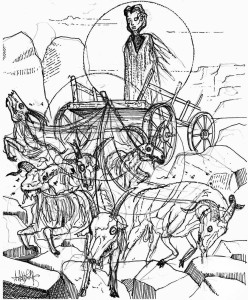
A couple of weeks after that dream I was listening to a podcast on gnostic philosophy. Being interviewed was a women who had written a book on the Greek god Dionysus, and as she described the god of “wine and revelry”, she used the ancient Greek word for savior: soter! I felt my brain flip in my skull when I heard that word. The podcast was recorded so I played it over and over again. I had heard it correctly. The word was soter. Not long after that I had another dream where I was visited by a certain long dead German dictator. The man with the Chaplinesque mustache was begging me to get in touch with SOTER so that he may ask him for advice. What the fuck was going on? I can only guess that I had read the word soter before and buried it somewhere deep in my subconscious. But now, what was my psyche trying to tell me? While brooding over this conundrum, I came up with an idea. Most use in their ritualistic workings the gods and demons manifested by the subconscious of others from the ancient past. But why play someone else’s music when you can create your own?
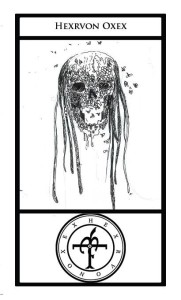
I asked the other members of The Sect to visualize their own special entity, that aspect of the subconscious self that comes to them in their dreams and/or visions. Many responded. I then asked them to describe that being — convey its essence — in a single word. That word was then translated into Latin, Greek, or Enochian, and then put through certain Chaos techniques by The Sect’s “Master of Rituals”, The Dark Fool. Over time he converted that word into a sigil. The sigil was handed over to The Sect’s art-director, Anton Wolf, and given it’s final appearance along with a detailed illustration of that “daemon”.
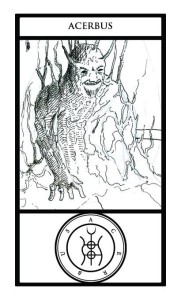
Thus began what is simply called, The Sigil Project. This endeavor has turned out to be more than a simple psychological art project. It has actually helped some of or members to get in touch with aspects of themselves they have either shunned, or repressed. Their deeper selves now have a face, and a voice. The members that participated have a personal tool, their own song, to utilize in their own personal workings.
Time will tell where this project will lead, but I do know this — it has only just begun.
